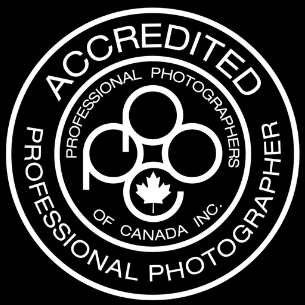Blogs

By Hari Singh
•
November 5, 2024
When hiring a photographer for a construction site, one must go beyond the “photographic qualifications” of the photographer and ensure they are experienced with construction sites. Mobile equipment, hoisting of materials, and open pits, for example, require an individual who has knowledge of the inherent dangers associated with these activities and is then able to react accordingly. Hoisting of materials would be a great opportunity for the inexperienced photographer to get a viewpoint from underneath and take the picture. One must never go underneath a suspended load. Construction sites are cluttered with equipment, materials, structural steel, tools, and debris. Structural steel can pose a serious threat with its sharp corners. Material lying around is another threat to a photographer who works predominantly in a studio or other clean environment and is used to moving around while looking through the camera. I was at a construction site where the concrete floor of a new building had the hoarding laid over it. As well, structural I-beams were lying on the ground, electrical cords for the power tools, sheet metal, and of course, steel cables anchored at ground level going up to the building columns to keep them in place while the concrete cured. Also, the ground level had narrow catwalks spanning its length in a criss-cross pattern as a result of the basement being open concrete pits. The catwalks were lined with wood railing anchored in place. This was definitely not the place for an inexperienced person to be at. Welding, for example poses a significant danger if the photographer does not know about welding flash. A photographer not familiar with welding will by habit, look at the subject through the viewfinder to compose and take the image. “Hey, can you look at me”. Also, knowing when not to disrupt the trades while they are working is another area of potential concern that requires experience. Lastly, does your photographer know the OHS Act? The photographer needs to know when to shoot and when not to. For example, you do not want images posted on social media showing someone up on a scissor lift or walking a girder and not being tied off. Or worse, the images are sent to the company for review. As an Engineer, I have spent my career working out in the field and in manufacturing. I have worked with welders, iron workers, electricians, millwrights, and numerous other trades. I have extensive experience in construction managing capital projects, doing risk assessments, and being responsible for safety. I am that qualified photographer for construction sites.
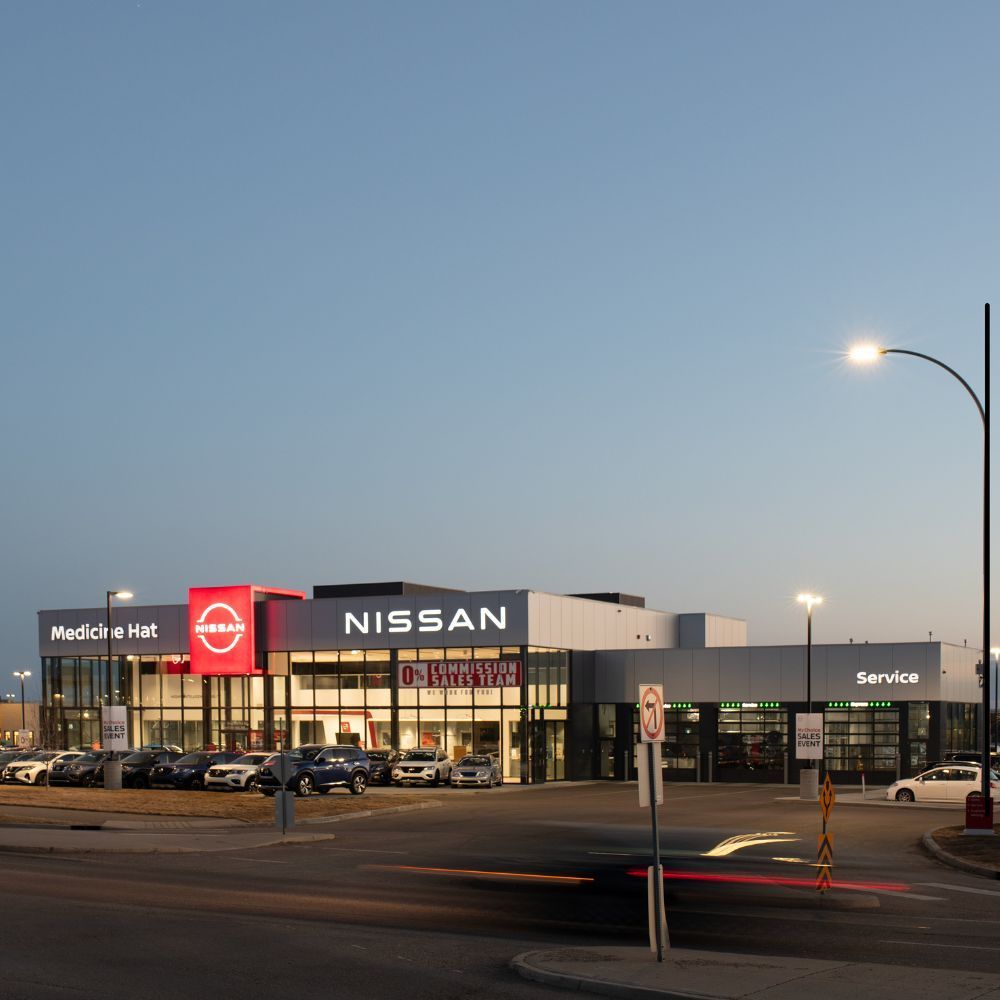
By Hari Singh
•
October 15, 2024
It is critical, when shooting buildings, that the vertical and horizontal lines are kept true. With the use of a wide angle lens, curvature becomes more prominent near the edges of the frame. The wider the lens, the more pronounced the curvature. As well, one must stand considerably further back to ensure that all of the building is in the frame. This results in a smaller image. With the use of a wide angle lens, one must rely on post processing corrections to make verticals true. In the following example, the lens used was a 35mm. The first image shows the amount of offset the vertical lines are from being true. This is the as-shot image. The second image is the corrected image using Lightroom. The light standards and building became true, but the post sign on the left shifted and did not become vertical. Merging these 2 images together, you can see what was done to the image to achieve this correction. The green Nissan signs and light blue standards is the corrected image. Note the amount of vertical downward displacement Lightroom did to the image to achieve vertical true. A lot of detail at the bottom of the image could have been lost if this was an interior shot using a wide angle lens. A photographer using a wide angle lens must take into account the potential cropping done in order to achieve the correction and plan for it accordingly during the shooting. With a tilt shift lens, minimal correction is required in post. The difference in use between a tilt-shift (hereafter called TS) lens and a wide angle lens is that all of the subject needs to be captured in the frame. A TS lens has the advantage of shifting. Thus, shifting allows the photographer to capture multiple images of the subject and stitch the images together to create one image. As well, the big advantage of using a TS lens is that with the same focal length, with a wide angel lens, one must stand considerably further back to ensure that all of the building is in the frame. This results in a smaller image
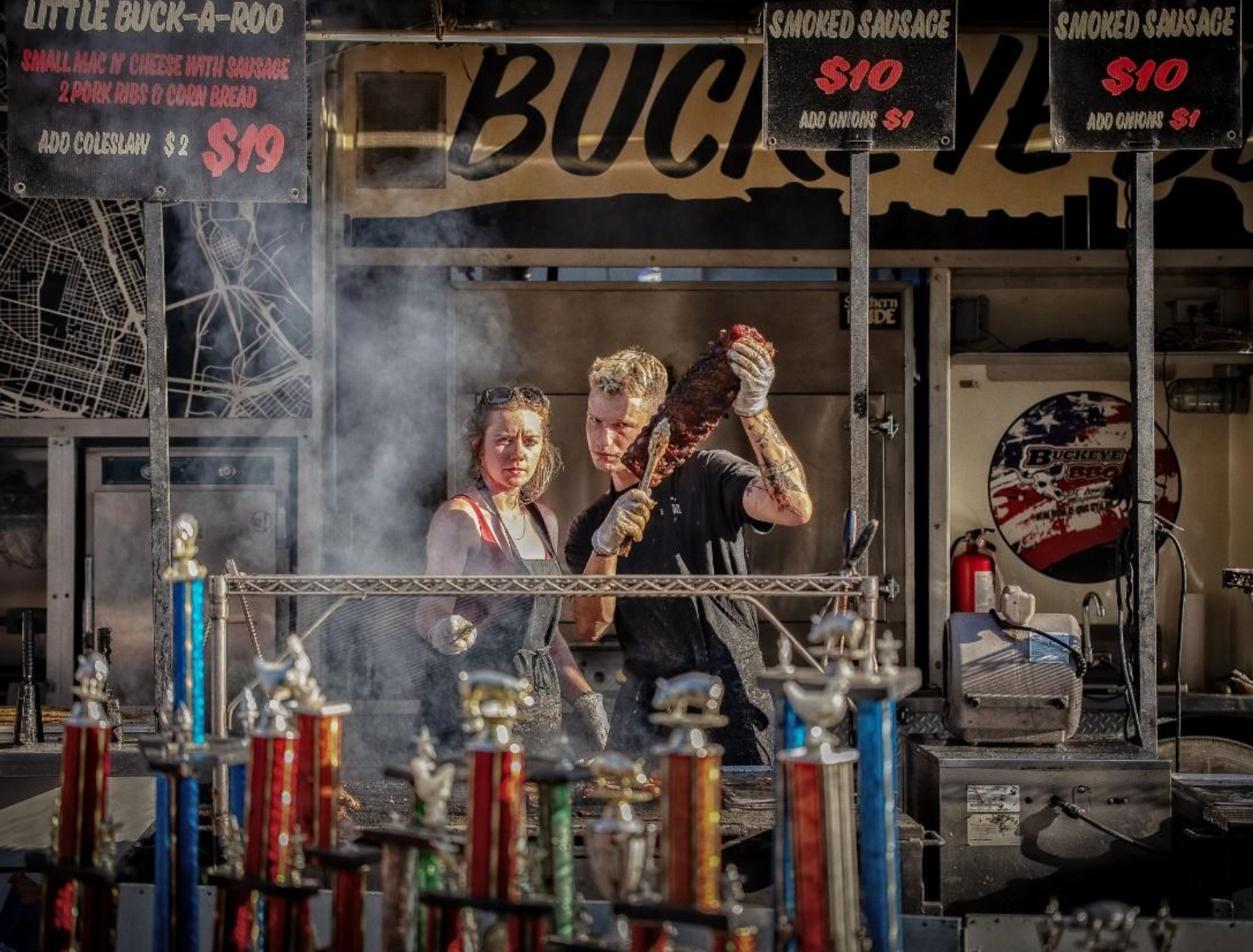
By Hari Singh
•
July 8, 2024
In today's world, everyone can take a photo or video with their cell phone and call themselves a photographer. But how can you be sure that the images will present you and your business in the best way possible? Hiring a professional photographer ensures that you get the experience, professionalism, and unbiased opinion that you need to make your photos stand out. Let's look at my thought process in this image of a series. This was promotional material for a Ribfest. First requirement. Show the ribs. Second requirement. Images should reflect the boldness of ribs. Look at their expressions. How cannot you not notice his expression. Notice the angle of his head? This was with purpose. The way he is holding the ribs and the fact he is holding them as opposed to it sitting on a plate. He is presenting the ribs to you. This required directing them on what to do. The result of being an experienced commercial photographer. Next, look at the trophies in the foreground. I purposely positioned myself so that they would be in the foreground. Why did I include them? Showing off your achievements in an image speaks volumes. Last, the editing process. Not to be forgotten. Edited to match the theme. Don't settle for a mediocre shot.
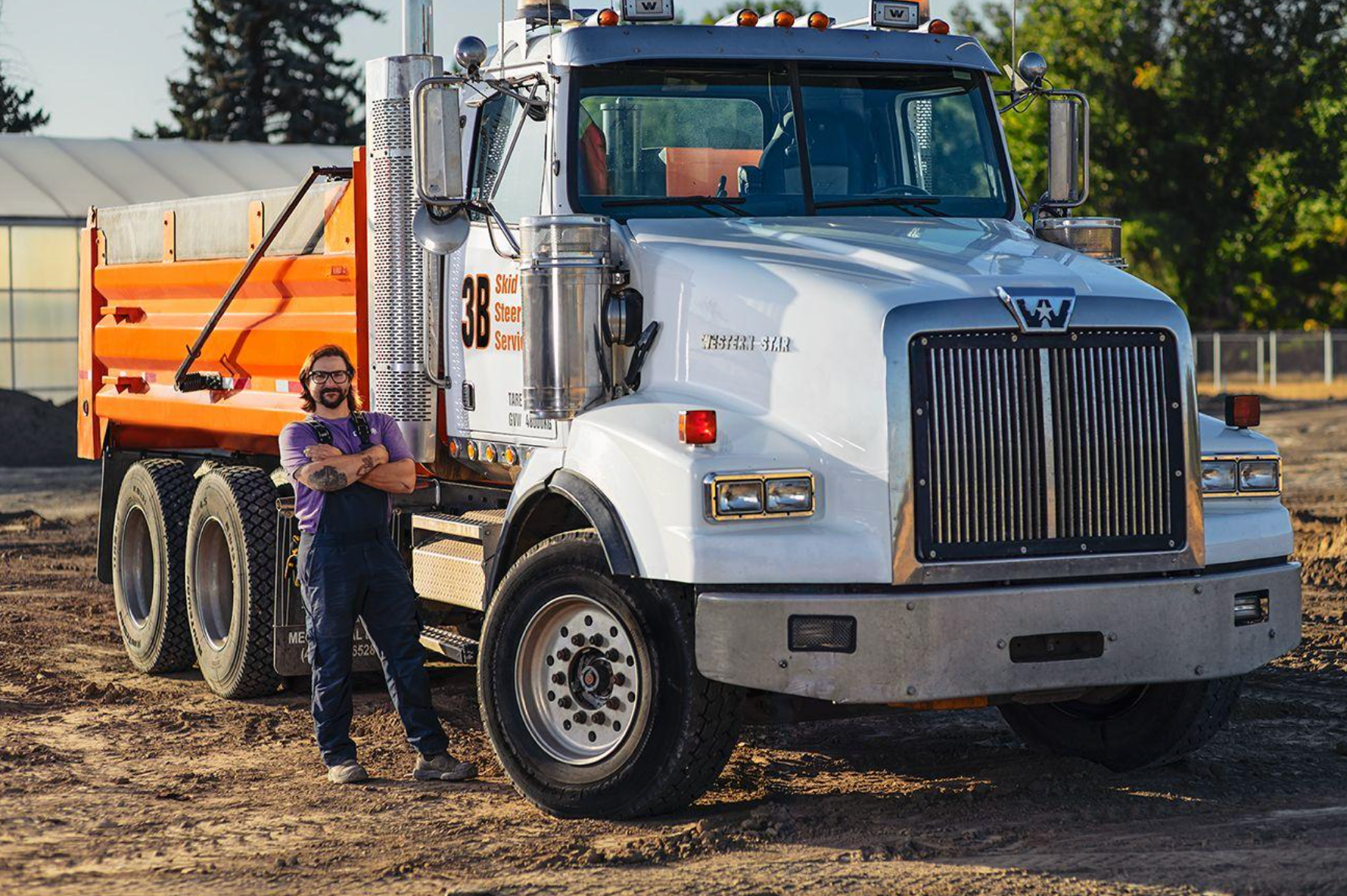
By Hari Singh
•
July 8, 2024
A branding session with a local business owner. My thought process for this shot. First thing. The owner posing with one of his vehicles. Being beside his truck, you know that he is involved in construction. And it is fitting that he is parked on dirt. A big component of any construction site. Moving dirt. His business name. Evident on the door and I positioned myself in such a way that I am avoiding that typical shot of a person photographing from the side and thus, not being able to get the whole truck in the shot. Notice the shadows. Shadows add dimension to an image. Shot in late afternoon. The sun is behind him, thus I needed to add a strobe to light him otherwise he would have been dark and his face hard to see. His pose. It is hard for people to pose and it requires a professional to get the proper pose for the type of shot and type of person being photographed.

By Hari Singh
•
July 8, 2024
When photographing buildings, two of the most important criteria are ensuring that the vertical lines are vertical and that there is no curvature, which is typically found in images that are captured by wide angle lenses. To ensure the above criteria are met, there are two methods the photographer can use. One method is by using a panoramic head which rotates the camera around it's nodal point. This creates a series of images that are then stitched in post to create a single image that encompasses the whole building. Another method, and one that I employ is using a Tilt-Shift lens or a perspective control lens. This lens shifts the lens in such a way that the perspective is maintained. This lens works equally well inside as well as outside. It shifts the lens and creates a series of images that are then stitched together to create one image. The image below was 3 seperate images stitched together.
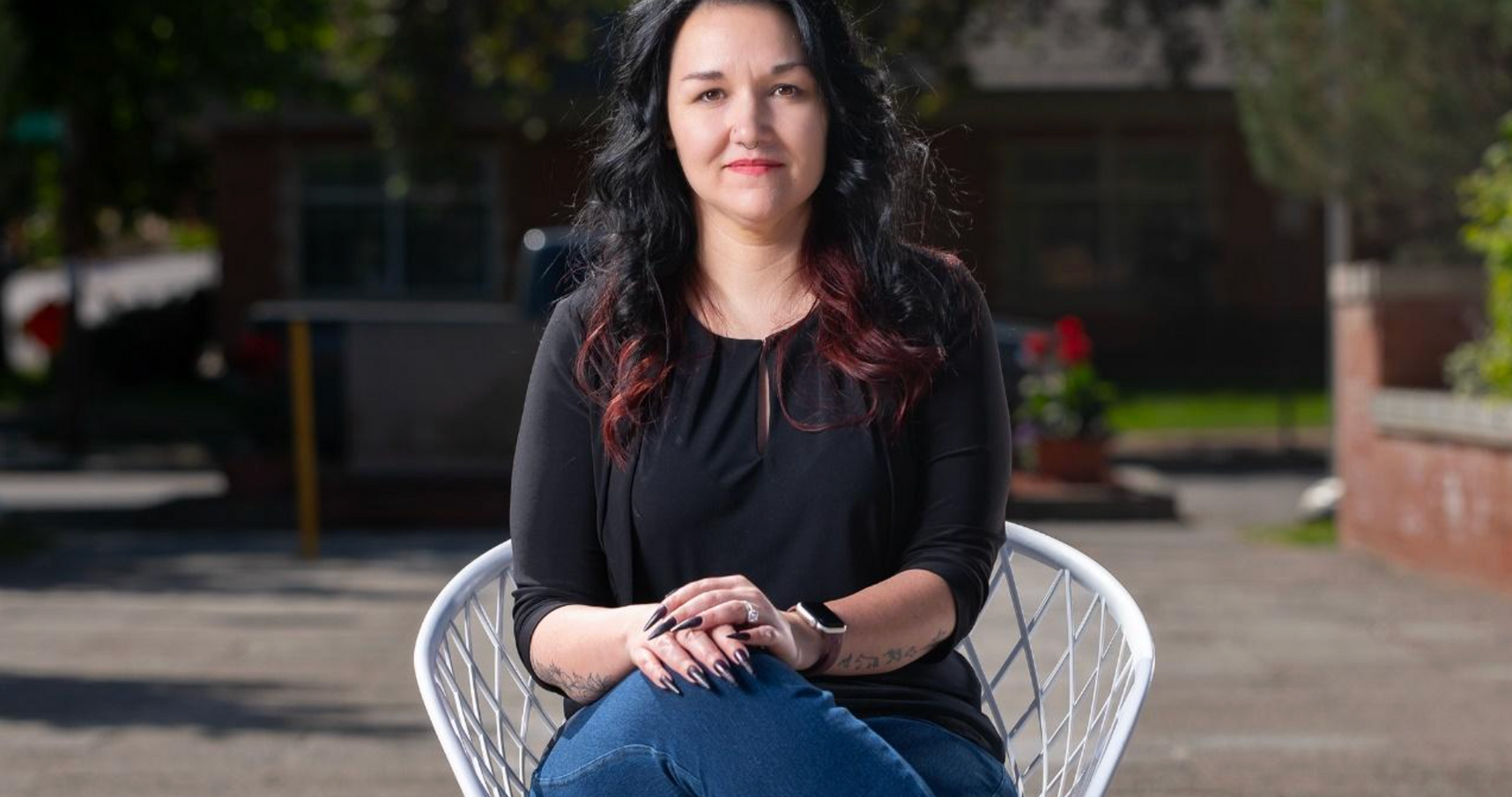
By Hari Singh
•
June 12, 2024
Such a crucial aspect of branding yourself is the use of professionally taken photographs rather than the handheld cellphone look. Your images are the first point of contact, and within 10 seconds, a viewer will form an impression. Make every second count. Capture their interest and make them eager to delve deeper into your business.
Medicine Hat Alberta Canada
Service Area - Central & Southern Alberta
© 2025
All Rights Reserved | Hari Singh Photography | Privacy Policy

